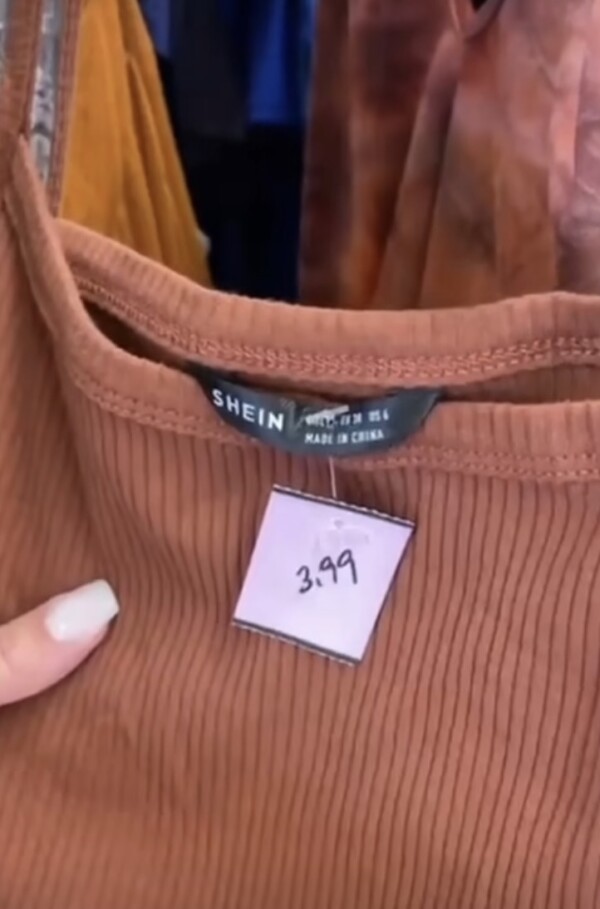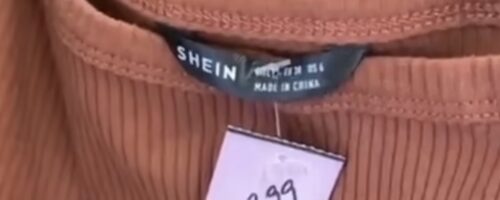
Nanjing, Jiangsu, China
How is it produced?
All clothing produced and sold by Shein are manufactured in ways that create unnecessarily large amount of pollution, and are made in warehouses with unsafe labour conditions. The processes used to manufacture clothing in the fast fashion industry rely on environmentally destructive techniques to produce garments fast and cheap. The main pollution sources of the production process are dyeing and finishing, which accounts for 36%, yarn preparation responsible for 28%, and fibre production creating 15% of pollution (The Quantis International 2018 report). The reliance on water is a necessary component of production, but the way water is utilized is deeply problematic. “The fashion industry is the second largest consumer industry of water, requiring about 700 gallons to produce one cotton shirt and 2 000 gallons of water to produce a pair of jeans.” (Rashmila Maiti, 2022) Companies like Shein promote the mass consumption of underpriced products that ultimately have aided in accelerating global issues such as climate change, excessive consumer culture and labour rights violations.
Describe the supply chain to the store shelf in Canada:
Shein clothing is produced and shipped to individual buyers who purchases their products online. Shein clothing ends up on the shelves of thrift stores when the articles of clothing are donated. The issue with this cycle of purchasing, wearing and then donating to thrift stores is that the vast majority of what is donated is not resold like intended. Many will donate used clothing in an attempt to elevate the environmental impact that throwing used clothes into the garbage would have. However, Shein clothing is not designed to last long term and more often than not what is donated is thrown away because of the clothing’s poor quality.
What is the power balance between the producer and seller?
The relationship between producer and seller within Shein’s company structure is reliant on an extreme imbalance in power. All power and capital is centralized at the upper levels of the company. Those working to produce Shein garments are subjected to Inhumane working conditions for long hours, only to receive meagre wages. The devastating workplace standards require labourers to work hours stretching upwards of 75 hours per week (Brittini Delven, 2019). Garment workers are primarily young women between the ages of 18 to 24, and receive wages that are a fraction of what is required to sustain a basic standard of living (Rashmila Maiti, 2022).
Can you recommend changes to the system to improve the balance?
The issues with the imbalance of power stem from the company’s business model, which prioritizes selling cheap product to turn a quick profit. If this were altered so that importance is placed on making a profit but also on the work standards for labourers. if there was a significant restructuring of the business model there would be a more even distribution of wealth and power that is equal to the work done.
References/Resources:
Devlin, Brittani, Where Does Shein Ship From and how is it So Cheap? 2022, Makeuseof, https://www.makeuseof.com/where-does-shein-ship-from/
Rashmila Maiti, 2022, earth.org, https://earth.org/fast-fashions-detrimental-effect-on-the-environment/
The Quantis International 2018 report, 2018, https://quantis.com/wp-content/uploads/2018/03/measuringfashion_globalimpactstudy_full-report_quantis_cwf_2018a.pdf

